
Marble tile is a classic choice that will never go out of style. But just because it’s a traditional material, it doesn’t mean you can’t use marble in a modern or contemporary-style bathroom renovation. Different patterns, sizes, compositions and mosaics composed from marble can take on almost any style. What follows are examples of marble tiles used in bathrooms.
This gorgeous marble tile is laid out in a chevron pattern, showing off the different variations in color in a fresh modern pattern. Chevron patterns are good choices for both floors and walls.

For a more traditional look, consider chevron’s close cousin, herringbone. In a herringbone pattern, the lines overlap rather than creating the strict horizontal lines seen in a chevron pattern. This lends a classic Parisian look.
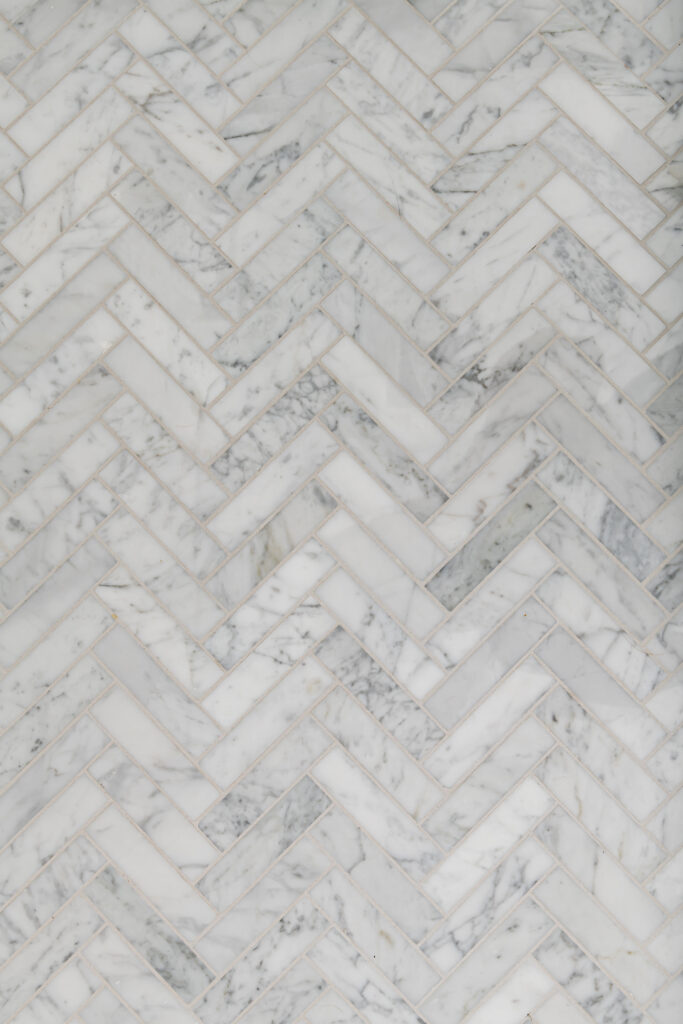
Hex tiles are a choice that works in bathrooms from traditional to uber modern. The geometry of the pattern gives it this flexibility. Small hex tiles are popular for shower floors, while larger hex tiles currently are trending on the bathroom floor.
Hex tile can come in a smaller pattern in a marble with a deeper variation in color from white to medium gray. One-inch hexagonal tile is a penny tile, which we’ll check out further along in this article.
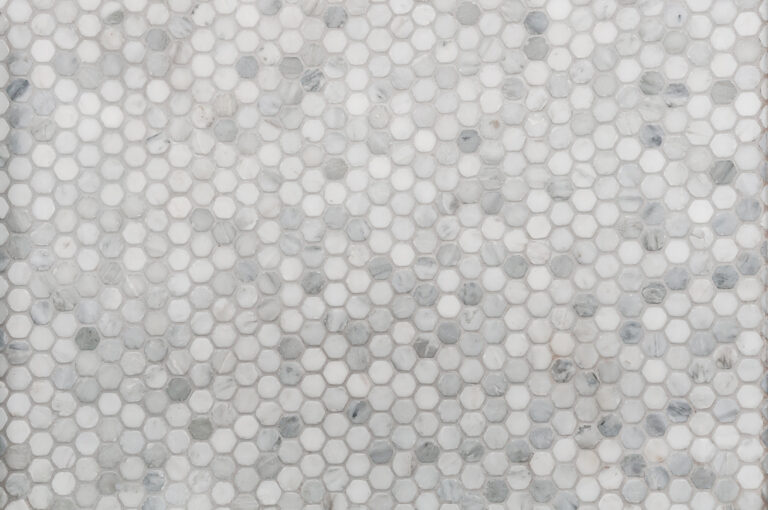
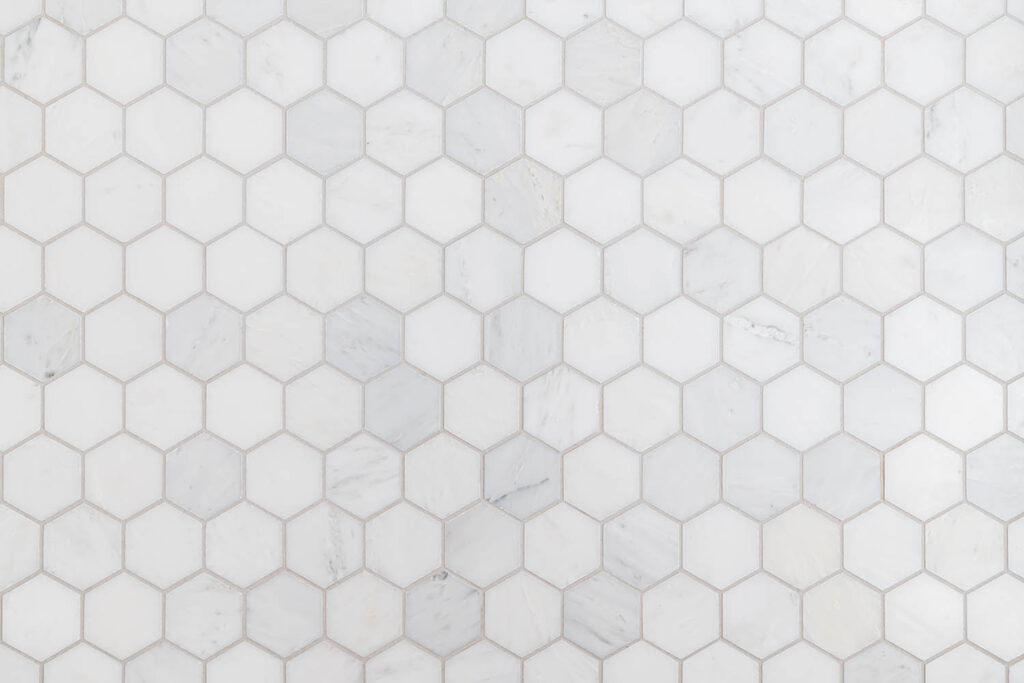
A larger format hexagonal tile adds variation in color to this elegant bathroom floor.
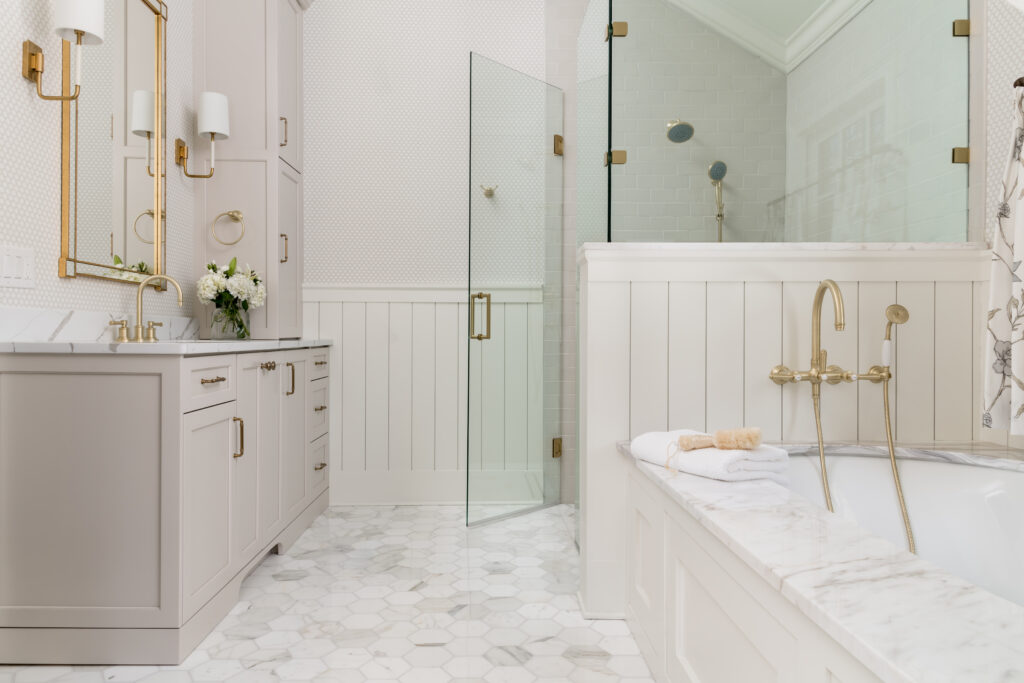
Currently, honeycomb tile patterns have been trending among our savvy Atlanta clients, particularly in the bathroom and on kitchen backsplashes. This pattern throws some softer lines into a room. Choosing honeycomb bathroom tiles is a sophisticated move.
Here’s how the honeycomb marble tile looks in this bathroom with vintage charm. You can learn more about this room in another post.
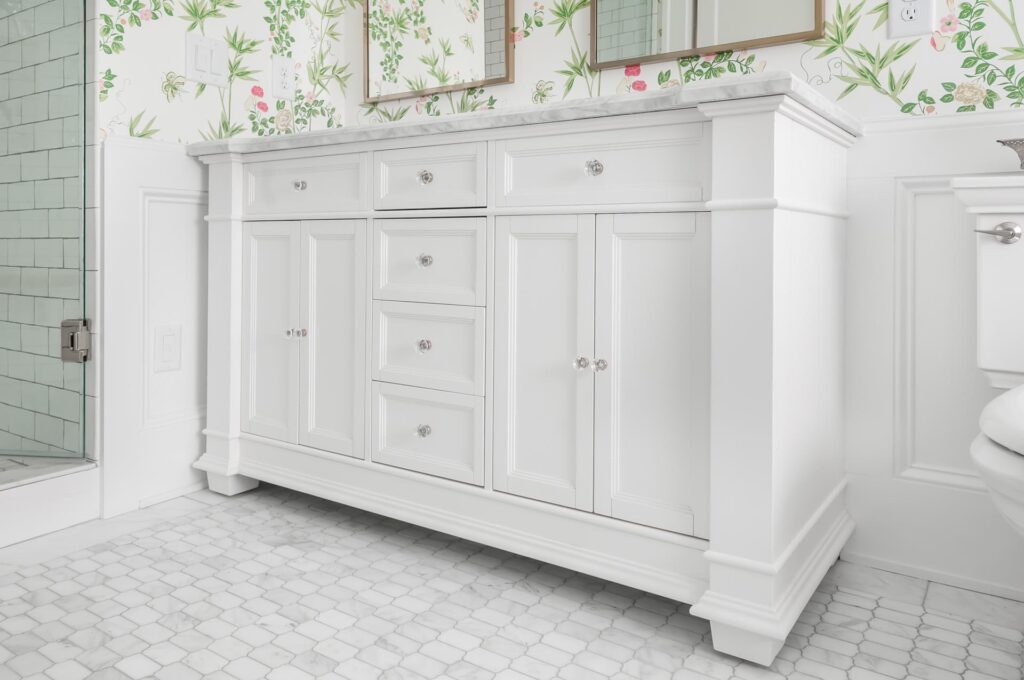
A mosaic is composed of small pieces of tiles that create a pattern. In the first marble mosaic project showcased below, we used the mosaic as a framed accent tile on the shower wall.
In the second project shown below, we laid out the same mosaic tile on the shower floor. A note about shower floors is that you’ll want lots of grip to prevent slipping. Accordingly, a mosaic with small pieces can be a good choice for the shower floor.
In the third project shown below, the mosaic tile creates a stunning graphic pattern on the shower wall. The straight lines of the pattern contrast with the graceful curve of the shower wall. The tile creates a stunning graphic pattern on the shower wall. The straight lines of the pattern contrast with the graceful curve of the shower wall.
In the fourth project image below, the lovely tile combines hexagons and a marble mosaic in its pattern. This brings an intricate pattern to the floor.
In the fifth picture, you can see how that mosaic looks in the bathroom.
In the last project image below, we used elongated subway tile in running bond and herringbone patterns in the shower to allow the mosaic to be the star of the space. This is a good example of choosing bathroom tiles that complement each other.
Encaustic cement tile is handmade, and the colored cement is poured into a mold to create the pattern. This means the colors go all the way through the tile. In fact, it’s very cool to see how it’s made: Check out this video to see how.
Encaustic cement tile can patina over time, so you have to appreciate how it can age. Doing a deep clean and sealing the tile once every year or so is a good way to keep it in shape.
One of the fun things about encaustic cement tile is that it has been made all over the world since the 1800s. That means there are all kinds of worldly patterns available to play with.
Some of these designs are influenced by Mediterranean designs in both Spain and its southern neighbor, Morocco. The various patterns form a quilt-like composition on the floor.

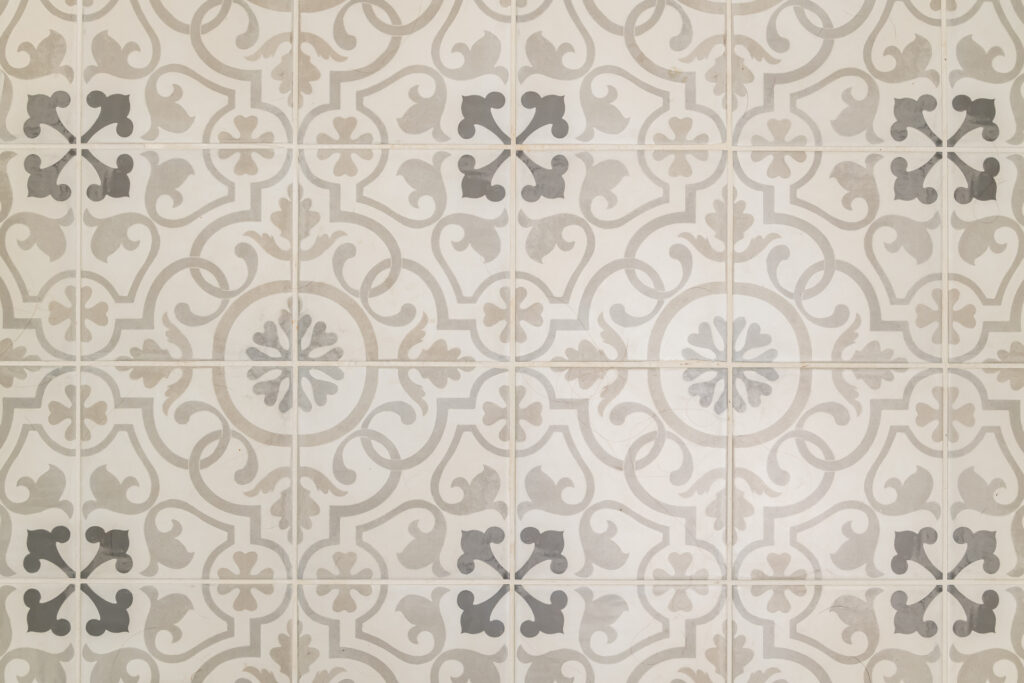
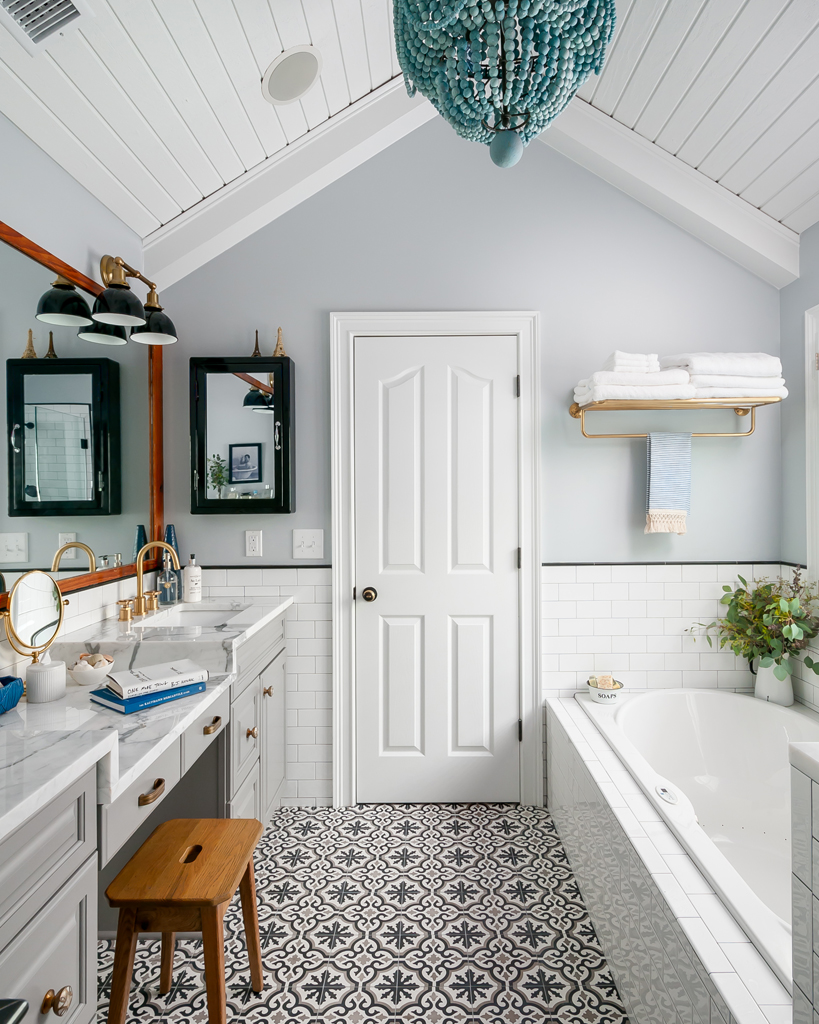
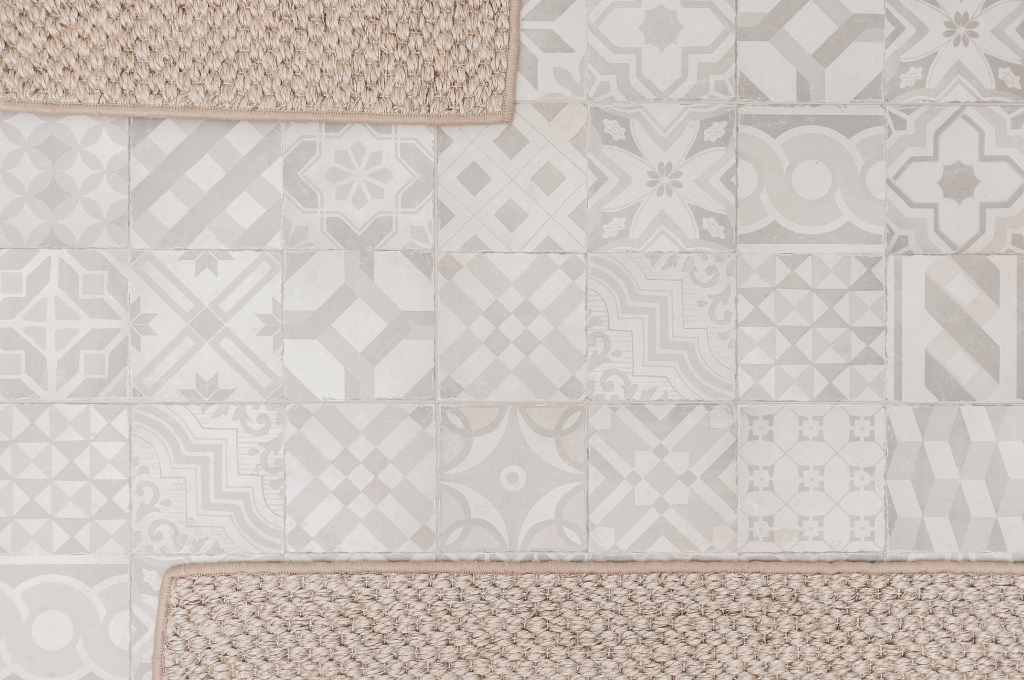
Porcelain tiles are a great choice for bathrooms because they are incredibly durable and often a less expensive material. And the wonder of digital printing has expanded the options for porcelain tile exponentially. For example, you can get wood, marble and encaustic cement tile looks with a digitally printed porcelain tile.
Penny rounds are a classic pattern that are usually most popular on bathroom floors. Though you can have fun extending them up shower walls or even bathroom walls. They are also a great choice for a shower floor because of their small scale. In this case, they form a playful and colorful pattern that added whimsy to the room.

Picket tile is an alternative to the ever popular subway tile. The shape is derived from fence pickets, hence the name! Choosing these bathroom tiles is a great option. Because picket tile can take on a traditional, transitional, modern, and contemporary styles.
When it came to choosing bathroom tiles here, we combined it with an intricate encaustic cement tile pattern.
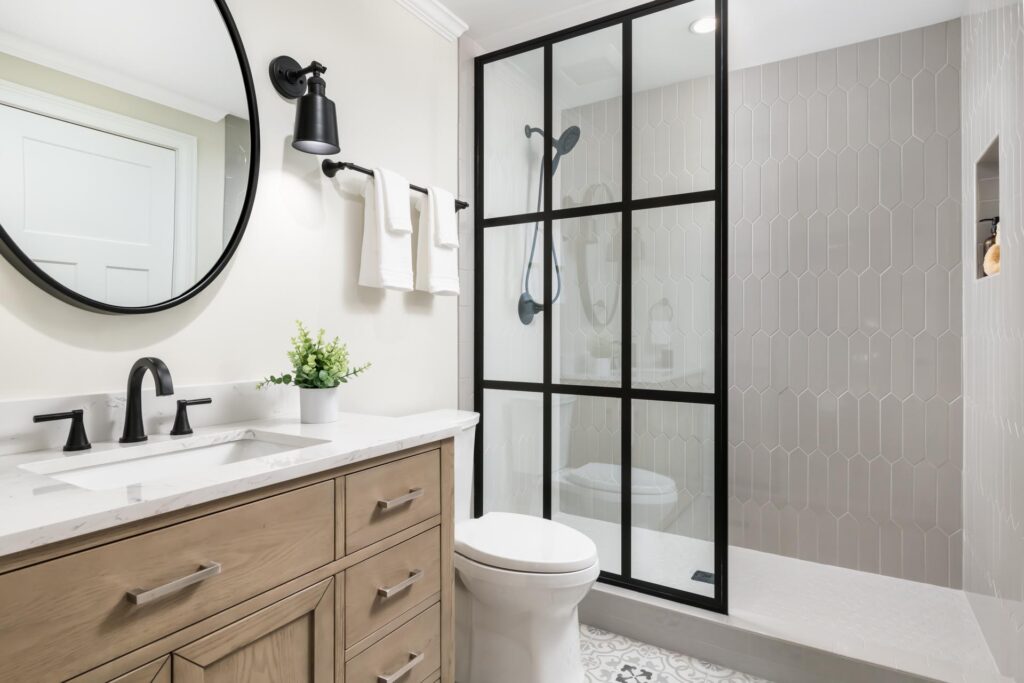
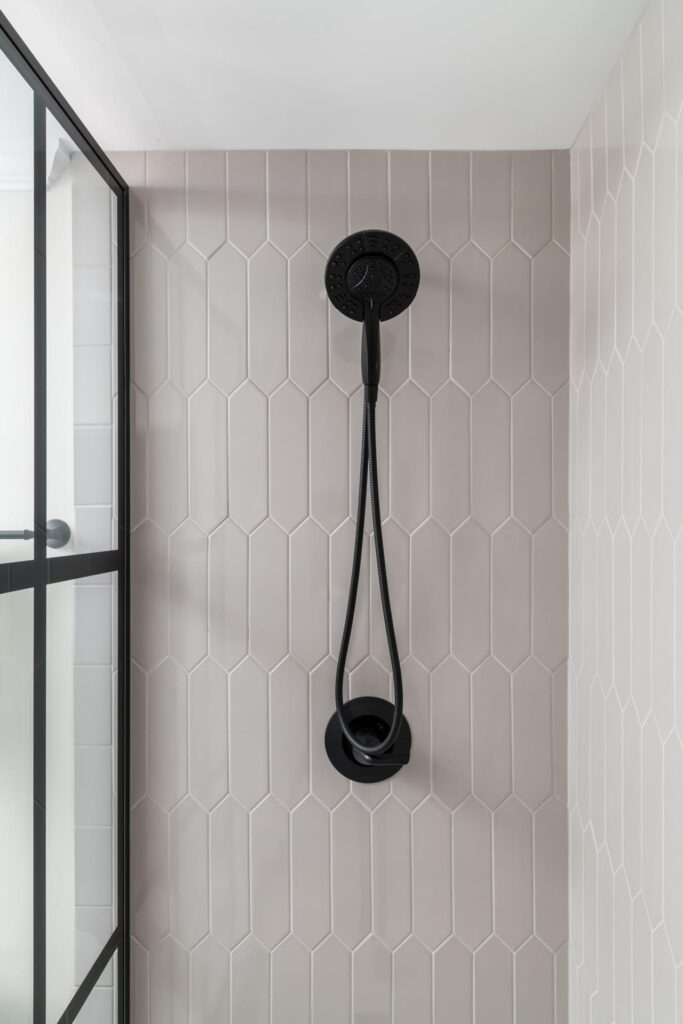
The possibilities for shapes and sizes of porcelain tile are endless as well. From the tiny 1-inch penny round to large-format rectangles and everything in between. Here, a solid black hexagonal tile lends a crisp touch to a contemporary space.
Additionally, digital printing can be used to mimic other materials with porcelain. This one has the appearance of encaustic cement tile. But the porcelain tile will require a bit less maintenance than encaustic cement tile would have.
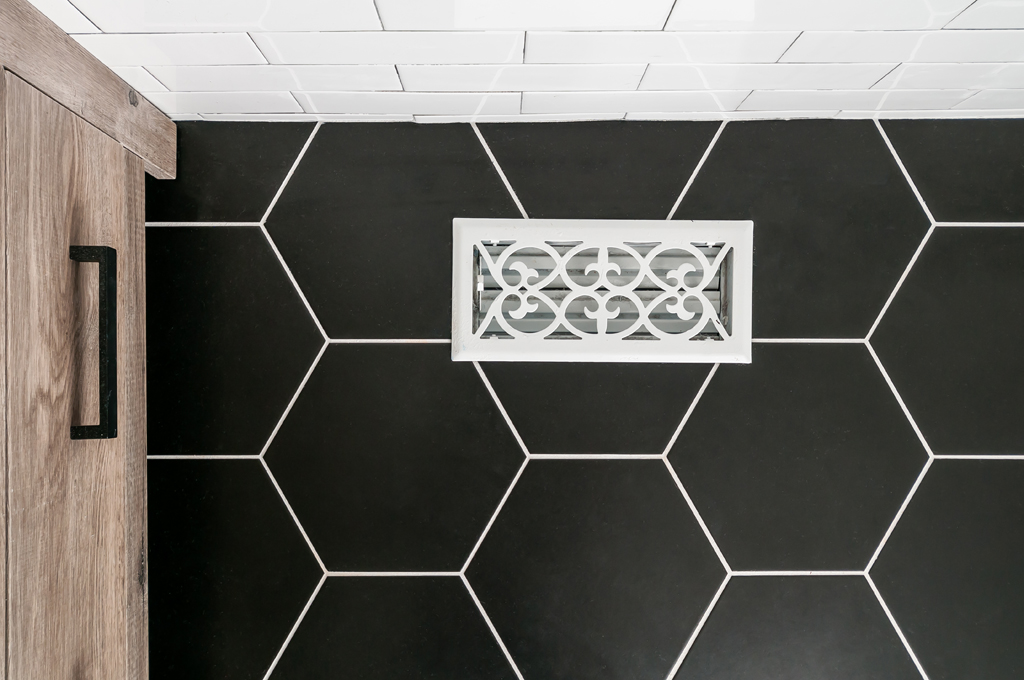

We hope this article can help you when choosing bathroom tiles. If you are ready to remodel your bathroom or complete any other renovation projects, please give us a call to schedule a free consultation. Our interior designer team will help you with choosing bathroom tiles to make your space spectacular.
A Beachy Clean Bathroom Renovation
Aging In Place Bathroom Renovation